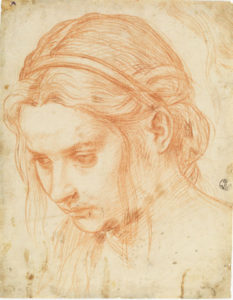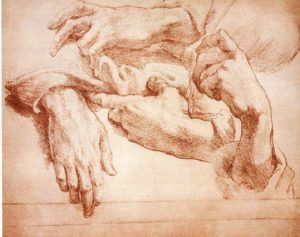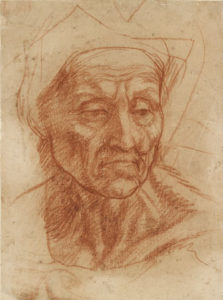Poor Andrea Del Sarto. The son of a tailor (sarto), he rose to become of the most successful artists of the High Renaissance. The Florentine artist’s skills were said to be on a par with those of Raphael and he is often mentioned in the same breath as Leonardo and Michelangelo.

Yet his accomplishments have been colored by a few damning paragraphs in Giorgio Vasari’s famous “Lives of the Artists.” The artist-historian’s long chapter on Del Sarto (1486-1530) is filled with high praise, until he gets to Del Sarto’s character. His former master, he tells us, was timid, henpecked and lacking in ambition. Vasari maintains that excessive devotion (or deference) to his domineering wife, Lucrezia, made him miss opportunities to grow as an artist and caused him to repeatedly inject her face into his paintings.
All this might have been dismissed as trivial gossip had not Vasari made the case that some essential backbone was missing in Del Sarto’s arts, too. This view has stuck through the centuries. Victorian poet Robert Browning portrayed Del Sarto as a brooding cuckold haunted by the knowledge that his flawless art lacked real emotional power.
You’d have to go to Florence to test these theories against the frescoes, but the Frick Collection has done the next best thing in bringing a show of Del Sarto’s drawings to its galleries. “Andrea Del Sarto: The Renaissance Workshop in Action,” borrows some 45 works on paper along with three paintings, to give you an inside look at how famous pictures grew out of sketches and studies.
In today’s terms, these drawings can be compared to the instructions and storyboards that a movie director uses to guide actors and cameramen. They range from close up studies of hands and torsos to portraits and figure studies to compositional sketches. His thoroughness is evident in a drawing of people at a table – a study for his “Last Supper”– in which only the feet and the upper bodies would be visible, but Del Sarto has lightly sketched in the exact position of the lower bodies to make sure the anatomy was right.

It didn’t matter if the figures in a painting were fully clothed. The studies always used nude models to which the clothes would later be added.
For one of his most famous paintings, “The Medici Holy Family,” you can see Del Sarto striving for an unusual degree of verisimilitude in the preparatory sketches. According to some texts, St. Elizabeth was 88 when she miraculously became pregnant with St. John the Baptist. His poignant life study is of a woman who could very well be that old. He softened the face considerably in the final painting, but in the company of two children and a young mother, her grim features steal your attention.
And what of the infamous Lucrezia?
Several drawings said to be of her give you a pretty good idea of her particular beauty. She had a compact face with a small chin and a shapely mouth. In some renderings, such as a black chalk portrait with a delicate play of light, she is walleyed, her left eye drifting slightly down and to the side, giving her a pensive look. There’s nothing angelic in her demeanor, but Del Sarto used her prototype for several paintings of the Virgin Mary.
She might be the only model who was also cast as Mary Magdalene, the repentant prostitute. In his red chalk drawing of her for that role, she is the picture of unselfconscious grieving, her head bowed, eyes fixed, limp strands of hair framing her face.

Whatever Vasari’s opinion of Lucrezia, Del Sarto obviously loved her, or couldn’t help loving her. Her features became so fixed in his mind, that they even seem to surface in his portrait of a handsome young John the Baptist, both in the black chalk drawing and the strangely lifelike oil.
In this and other of Del Sarto’s works, there is a moodiness, a psychological tension that seems to belong less to the High Renaissance with its bright idealizations, and more to the period that followed – Italian mannerism. It was a reaction to all the sunny perfection, and Del Sarto, who probably knew something about the dark side of obsessive love, came by it honestly. And this is something that Vasari, who found him to be not enough like the heavenly Raphael, may have missed altogether.

